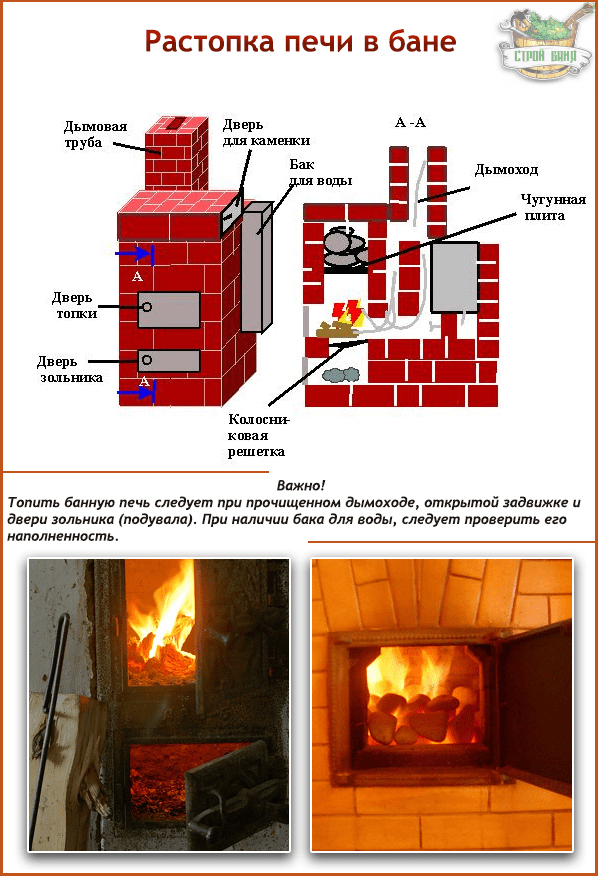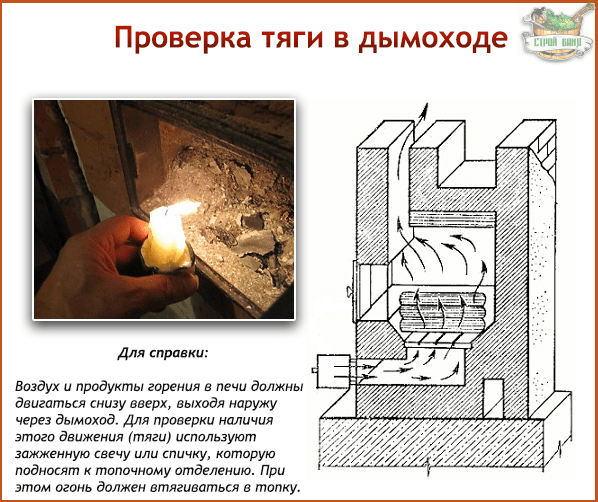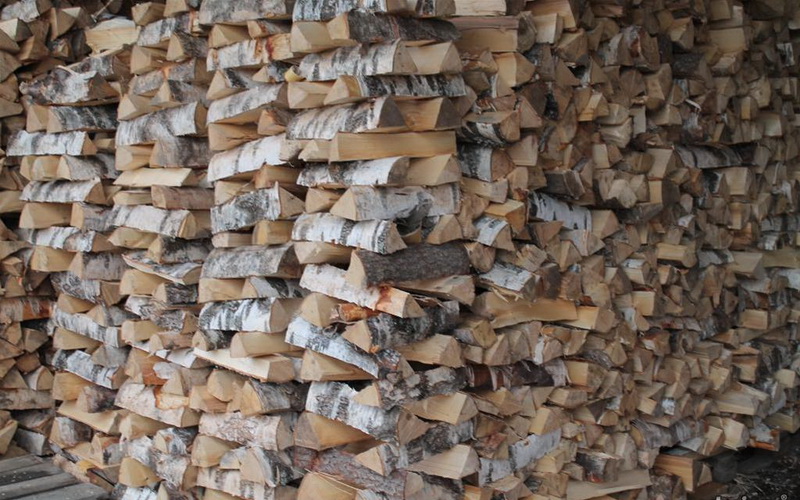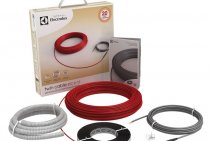The better to heat the bath
oak firewood
The oak must be of middle age. Young oak does not give the necessary heat, and fills the bath with the smell of charcoal. There is a lot of decrepit wood in the old oak, from which there is more ash than heat. The air in the bath, heated with old oak, will be heavy. Good firewood fills the bath with heat and the aroma of the forest and freshness.
birch firewood
The most common firewood is birch. They ignite easily and burn with a long, even flame. The heat from the stove heated with birch firewood disinfects the bath, filling it with a light fragrant aroma. However, birch firewood becomes less fragrant after two years of storage. In addition, if the dosage of air in the furnace is incorrect, when the firewood burns smoky, tar and birch tar are sublimated along with the smoke. It settles quite abundantly on the walls of the pipe, and sometimes flows down if the pipe is thin-walled and cools easily. The abundance of tar on the walls of the pipe is a fire hazard.
Linden firewood
Linden firewood has been used for special occasions since ancient times. For warriors who were wounded in battles with enemies, they heated hot baths with linden wood, gave them a decoction of linden blossom with linden honey. Linden spirit in the bath is healing for the skin and respiratory organs. Linden is quite difficult to kindle, it flares up slowly, but its headlights are long and persistent. Linden firewood should not be stored for more than two years.
Alder firewood
In Russia, alder firewood is considered royal. On the butt and chip, they are painted in the air in a reddish color and differ sharply from other logs. Alder firewood burns hot and almost does not smoke. For firewood, it is better to choose alder on soils with the least moisture. The bath, heated with alder firewood, has an anti-cold effect. Alder firewood dries quickly enough and retains its unique smell for a long time. Even after three years, alder firewood carries its own specific aroma.
Aspen firewood
In the villages they say: aspen does not burn without kerosene. This is because aspen wood is quite difficult to kindle. If you put aspen in an already melted stove, it burns hot enough and keeps the heat for a long time. In the villages, it is also believed that aspen firewood, when burned, cleans the chimney. Usually aspen firewood is cheaper than others. As a rule, aspen is a clumsy tree and is not fully used, there is a lot of waste that goes to firewood.
Coniferous firewood
The most common firewoods are softwood, spruce and pine. Pine, due to its higher resin content, burns hotter than spruce. It should be remembered that in tar firewood during burning, a sharp increase in temperature, resin sinuses burst, small cavities in the wood where resin accumulates. and this is a characteristic crack and sparks fly in all directions. Including the open oven door. When you add firewood or mix it with a poker, it is better to put on goggles and protect your eyes. And when the stove door is closed, look carefully at the floor near the stove to see if a spark has flown somewhere. It is better to prevent a fire than to extinguish it.
Coal
Often, instead of firewood for kindling, coal is used, which has both advantages and some disadvantages. First of all, the use of coal is more beneficial, since it takes less than firewood to heat the bath, in addition, the heat from burnt coal is retained for quite a long time. The disadvantages include increased humidity, which appears during combustion, as well as the lack of aroma, which is given by burning firewood.
In no case should you use old things, garbage, etc. for the firebox, as many materials are toxic and can harm those who are steaming.
It is known that 1 kilogram of dry firewood gives 2800 kcal.To get these calories when burning with various types of wood, you need to take the appropriate amount (in kilograms) of firewood, depending on their volumetric weight.The volumetric weight of firewood in kg / cubic meter. to get 2800 kcal:
Expert answers
It's East Ukraine:
Better. Poplar smolders more, pine gives off little heat. Maple is somewhere next to aspen, after acacia with oak. If such a question came up, then I’ll add it))) The most heat-releasing is acacia. Even raw ones flare up at a time))
Walking on my own:
poplar is very energy-intensive, I won’t tell you about the rest
Olga Meshkova:
Pine logs burn hotter and longer than maple logs due to the resin in them. Birch firewood is also good - it burns hot. Maple - a flame like a flame. Poplar is just soft wood and that's it. It pricks faster. If you choose firewood - then pine and birch. Pine pricks more difficult than birch.
irina ivina:
In our area, the most worthwhile firewood is pine and birch (hot) and a little aspen is added (cleans the chimney from soot). The tree is valued lower and pricks worse. Poplar and maple do not count as firewood
Roman Shved:
In short buddy!!! My advice to you: delete the fucking previous replies. The most lame firewood: spruce, pine, poplar. They burn fast and don't make any sense. One headache. Running firewood: birch, alder, aspen. Firewood for "millionaires" - maple, ash, oak, hornbeam, beech, mountain ash. For "millionaires" gourmets - all firewood from fruit trees. And if you have maple logs more than 1 meter long ... I envy you. Feel free to sell them to a furniture factory or private carpenters... they will kiss you in the ass and bring you 10 cubic meters of production waste for free to fire the stove.
Maxim Paromoshin:
As far as I know, alder was considered “Royal wood” - a lot of heat and little soot. Poplar - don't take it. Heat (according to my practice) is not enough. Empty tree. Birch is the most popular and good firewood. Aspen - if present - is good for cleaning the chimney.
Lone Wolf (EW1AAD):
Easy! Calorie content is not very good - but you can heat it - the chimney will not be clogged with soot)
Andrey Kostenko:
Everything is suitable for firewood, but if you really choose, then birch is the best heating product, and poplar is empty shit.
Goon Goon:
I live in the city and don't know.
AUX:
Suitable, but only stinks when sawing
Metin Chiftji:
vice versa! the chimney will have to be cleaned more often! poplar burns quickly, warms, but the heat quickly disappears!
Maksvel-haus:
Everything burns in the oven, but it is warm from the birch and the Christmas tree.
Kotofey:
you are tormented to prick it, it burns out quickly and the heat transfer is small
Valya Tyutchenko:
I live in Kuzbass in a small town, for the second year we have been exterminating poplars and selling them to the population for firewood. In order to kindle coal, they are quite suitable. And as an independent fuel, I think not very much. You did not write that you want to heat a bath, a fireplace, or a stove in the house for heating.?
Daria Vikhrova:
We are engaged in cutting down urban poplars, people often ask, we give it away for free
Semyon Altakh:
I collected a sawn-off poplar, stabbed it, flooded it, and how he got me nichrome doesn’t burn if you don’t burn anything except poplar, it doesn’t burn at all, though it’s a little damp for me. What I like about poplar when burning is its wonderful smell in general, and the fact that it is free
Oksana Bobinskaya:
Together with birch, it burns well. A wonderful smell creates inside the bath. Almost no waste.
Best Answers
Svetik:
This is a resinous tree. I think that it will smoke and smoke, and even the pipe will be covered with soot from these resins. It is good to drown birch. Even pine is not so. She's also resinous.
TORQUEMADA:
it is possible, but not necessary, it smokes, you are tormented to clean the stoves and it flares up badly. unless mixed with other firewood
Auto Leda:
it burns with a blue flame, and about the resinousness, after it heat the aspen a couple of times and that's it, the aspen removes all deposits
robert yusupov:
low combustion temperature, and a lot of ash. but dry it burns, and if you drink with birch or oak, it will not be bad.
SEVER velloris:
rotten burns little coal a lot of smoke
Tatyana Moiseeva (Ivanova):
Gives little heat
korol-yurik:
It sucks.
Olga:
The stove-maker told us that it was impossible to heat with poplar. Little sense, a lot of trouble.
Lyubov Kuznetsova:
no heat...
Marina Viktorovna:
to combat soot: you need to periodically throw potato peelings. Benefit and the problem of where to put them is solved. My great-grandmother's advice. I use it myself.
svetik:
you can heat with poplar, we heat it ourselves, it does not smoke and keeps heat normally. and there is no soot from him.
Instructions on how to properly heat a bath
- The hardest part is the kindling. First of all, open the valve in the pipe, otherwise carbon monoxide will not come out. Be sure to check this condition before each kindling.
- Chop wood chips and prepare 4 logs. In addition, you will need newsprint.
- Put 6-7 crumpled sheets of paper in the oven. Put the chips on them, and mark 4 logs on top, preferably perfectly dry. Moreover, it is desirable to distribute the logs across the entire width of the stove, and not put on top of each other.
- Set fire to the paper under each of the logs and quickly close the firebox, otherwise you will blow smoke. Do not be afraid, in 95% the fire will flare up, so it is not necessary to follow it with an open firebox.
- Throw in more firewood after 15 minutes. How often to throw them up in the future depends on their dryness, but in the first hour of the firebox, the main thing is not to miss the moment - to throw it up when the old firewood, which has turned into coals, begins to break into several pieces. Somewhere in 1.5-2 hours, the temperature in the furnace will rise greatly, and it will be possible to throw up even when only coals remain in the stove.
- Throw new firewood as close to the door as possible and as far from the chimney as possible. Thus, you will increase the area of \u200b\u200bcontact between the fire and the pipe, which will reduce the time that you will heat the bath.
- With good draft (this is evidenced by bright red, as if swollen coals in the furnace), after 2 hours you can close the valve halfway. It will also reduce the time it takes you to heat the sauna and save fuel.
- It is better to steam brooms directly in the steam room when at least 60 ° C has run up in it.
- Do not start heating the bath if there are wooden containers in the steam room (for example, a bucket from which they throw it up) that are not filled with water. This will cause them to dry out quickly.
- If the bath is new, it heats up well, and you are satisfied with the temperature, then you can start steaming. The valve can be closed only when all the carbon monoxide has left the furnace. If, after stirring the coals in the furnace, you see the appearance of a bluish-greenish flame, then carbon monoxide is still present. In a bath, which is difficult to melt and which quickly loses temperature, it is necessary to remove all the coals from the furnace and completely close the valve.
In order for the bath to always smell good and have a good heat, you need to take care of the quality of firewood. Bad wood can cause unpleasant smells in the sauna, such as mold or swamp, and it can also take much more wood than usual to heat the sauna.
The best firewood for a bath according to the density of wood
First of all, it is worth noting that they are:
- Solid (with high calorific value and prolonged heat in the furnace compartment - oak, ash, hornbeam, maple);
- Medium hard (with less heat release - cherry, apple, pear, alder, birch, larch, pine);
- Soft (with a minimum percentage of room heating due to rapid combustion - aspen, alder, willow).
Of course, firewood from the first group is preferable for a bath, as they are dense, finely porous, giving coals that do not go out for a long time and a sufficient level of heat.
The next type is loose trees with low density. They maintain a bright flame, but go out very quickly, almost without having time to give off heat.
Important component 3 - the correct furnace algorithm
On the grate, parallel to each other, lay out two logs at a distance of 10-15 cm. Between them is a crumpled sheet of paper, which we fill with wood chips or shavings. The “seed” is completed by two more logs, laid out obliquely on top.
We set fire to the "seed"
We set fire to a lump of paper in the "seed" with a match or a kitchen lighter. You can not use flammable liquids to speed up the ignition: gasoline, diesel fuel, kerosene, xylene, acetone, etc. If the firewood is damp and cannot be ignited, then you can use a tablet of dry alcohol. We are waiting for the characteristic noise of the flame to appear in the furnace, close the firebox door and cover the blower (not completely).
Throwing wood into the oven
"Seed", of course, will not be enough to kindle the furnace. Therefore, to continue burning from time to time, you will have to lay firewood. The first time this is done 10-15 minutes after the "seed" is ignited. We open the firebox door, level with a poker all that is left of the "seed" and put firewood on about 2/3 of the volume of the furnace firebox.
In the future, a new portion of firewood is laid when the old one burns out - about once every 1-1.5 hours.
We complete the firebox of the bath
In winter, the bath is heated for at least 5-6 hours, in summer it is faster - an average of 3-4 hours. When the bath heats up to the required temperature, the firebox can be finished. We wait until the last portion of firewood burns out, open the firebox door and check if there are bluish flames above the coals - signs of carbon monoxide. If everything is in order, it blew, the smoke damper and the firebox are completely closed.
After all that has been done, we open the doors of the steam room and the window so that the bath is ventilated. 15 minutes is enough for the bath to be filled with fresh air. After that, close everything except the window. The bath should be infused for about two hours. Do not be afraid, during this time she will not have time to get cold, but the heat will become soft, uniform, the steam will be light. After we close the window and proceed to the bath procedures.
There are three answers to this question: from a practical, health and cost-effective point of view.
- The first insists that solid woods should be used for the bath, since they burn longer and give more heat.
- The second argues: it is preferable to take "healing" logs that have the most positive effect on the body.
- The third one speaks of the expediency of using only those firewood for the firebox that are mined right on the spot and, therefore, are inexpensive.
Important part 2 - preparing the oven
Now that the firewood has been selected, you can think about kindling the sauna stove. First you need to prepare it - we will melt it later. We follow the instructions:
- We clean the grate and the ash chamber (blower) from ash and coal;
- We wash stones in clean water;
- We determine whether there is a draft (chimney passability) necessary for the release of carbon monoxide from the stove.
To do this, open the smoke damper in the chimney, the doors of the firebox and the blower. Then we bring a lit match into the furnace and see where the flame rushes. If it is up, that is, it is drawn into the chimney, then everything is in order - there is a draft. You can start sorting. Otherwise, you will have to pre-clean the chimney, since it is forbidden to heat the bath without draft - the stove will “smoke”.
Step-by-step instructions for the correct bath firebox
As we wrote above, firewood for a bath must be dry and of high quality, and this directly depends on their proper storage.
If you are preparing the kindling logs yourself, then they need a dry and protected place, such as.
Wash the stones, make sure there is enough clean cold water for washing.
Open the valve on the pipe through which harmful carbon monoxide will escape.
Prepare wood chips for kindling and 4 logs. Place them on the grate of the stove, distributing them across its entire width.
Then shove a few crumpled sheets of paper or newspaper into the oven. Light them up and close the firebox door.
After 15 minutes, you can throw a couple more logs. How often you have to add firewood in the first 1.5–2 hours of kindling depends on how dry it is and how quickly it burns out.The main thing here is not to miss the moment when the burned-out tree, which has become coals, begins to split - then you need to throw the next portion of the logs.
When the temperature in the firebox becomes high enough, firewood can be thrown less often, even after there are only coals in the stove.
In order for the fire to burn better and the time for kindling the bath to be shorter, new firewood needs to be thrown closer to the stove door and away from its chimney.
If the draft is strong enough, and this can be seen from the presence of red swollen coals in the furnace, after 2 hours the valve can be half closed
This will not only save fuel, but also speed up the process of heating the bath.
It is important to periodically stir the coals with a poker, but try not to touch the red-hot firebox door so as not to get burned.
The laying of a new portion of firewood must be repeated several times. In summer, the bath is heated for about three hours in a row, and in winter for at least 5 hours
At the same time, it is necessary to control the level of water in the boiler, add it in time, not allowing it to completely evaporate.
After you feel that the bath has warmed up well, you need to thoroughly ventilate it again by opening all the windows and doors. If you have
The firebox is a whole ritual. Let us consider in more detail all the subtleties of bathing art.
Before laying firewood in the firebox, the grate and the ash chamber are cleaned of residues of combustion products in order to completely release air access to the burning fuel, otherwise the stove with a blower will turn into a stove with a dead hearth, which is uneconomical. The increased humidity of firewood worsens combustion, so they are pre-dried.
It is necessary to lay firewood with gaps and in such a way that at least 200 mm remain to the top of the firebox. It is desirable to heat the bath with birch dry firewood, from which there is less soot, or with aspen, pine, oak, spruce, etc.
Do not throw painted wood, plastic, roofing felt, bitumen into the furnace. Do not overheat the stove: cracks will appear in the lining and masonry. When there is no bluish-blue flame above the remaining coals in the furnace (a consequence of the combustion of poisonous carbon monoxide, the so-called carbon monoxide), the furnace is considered finished. After 5-10 minutes, you can tightly close all doors and dampers.
To avoid carbon monoxide poisoning, do not light the stove late in the evening. If the design provides for the operation of the furnace on coal or anthracite, the valve should be installed in such a way that it closes loosely and a gap of at least 10-15 mm remains.
First, the stove is fired with small wood. A layer of coal of 50-60 mm is poured on them. After the coal flares up well, the backfill thickness is adjusted to 150 mm, but no more, otherwise fuel consumption will be uneconomical. After the furnace is completed, the remaining coals are raked onto the grate so that they are well blown with air coming from the blower.
If there is no grate, they rake up closer to the outlet of the furnace. With abundant gas formation in the firebox, flame ejection may occur. This usually happens when they try to melt the stove with flammable liquids (gasoline, kerosene, etc.). With a high concentration of gases, an explosion can occur, which can not only destroy the furnace, but also cause a fire.
The firebox cannot be loaded with a new portion of fuel (especially fine fraction), completely covering the hot surface of the furnace bottom: it “languishes”, releasing a large amount of volatile substances, without flaring up due to the absence of a flame and a decrease in temperature. In this case, the concentration of gases increases sharply and at the first appearance of a flame an explosion occurs.
Therefore, fine-fraction fuel must be loaded into the furnace in small portions, giving it the opportunity to flare up gradually.
Open the furnace door carefully so as not to cause a sudden fire.
The best firewood for a bath in terms of savings
Hornbeam, maple, ash, oak are incredibly expensive, so the population makes a practical choice in favor of those trees that grow massively in their region. Birch and aspen are especially often chosen - they are both healing and give enough heat, and do not clog the chimney too much with soot.
But the most important requirement is dryness. The wood must rest so that the percentage of water in it does not exceed 15-20 units. It is these firewood that burns hot, melts easily and gives off a fragrant smell. A suitable time for harvesting logs for a bath is winter, in particular January and February, when the tree is frozen and there is a minimum of moisture in it.
The main indicator for firewood is their degree of thermal conductivity. When choosing firewood for a bath, this factor must be taken into account. More experienced bath attendants endow them with special mystical power, carefully sharing the recipes for kindling and maintaining the fire.
Time moves inexorably and modern technologies and scientific knowledge come to the aid of lovers of a good steam. Thanks to this, it is possible to obtain the desired result at a lower cost.
Important component 1 - good firewood
It depends on the choice of firewood how quickly your bath is heated, what the bath heat will be like. Preference should be given to wood of hardwood trees: hornbeam, oak, ash, maple. These rocks have the highest heat transfer, that is, they emit the greatest amount of heat during combustion. The calorific value of the wood of fruit trees (apple, pear, cherry) is slightly lower, but it also provides good heat in the oven. Deciduous trees have even lower calorific value: birch, alder, etc. Despite this, it is deciduous trees that are used most often, due to their availability and cheapness. Coniferous firewood is the least popular for heating a sauna stove. This wood gives little heat, in addition, when burned, it forms a lot of soot, which settles in the chimney and on the stones.
Another important characteristic of firewood, which is also worth paying attention to, is humidity. The smaller it is, the better the bath will be heated. Ideally, if the moisture content of firewood does not exceed 20%
Freshly cut wood has a moisture content of 33 to 50%, so it does not burn well. To dry such firewood, it is enough to let them lie down for some time in a dry, well-ventilated room.
Ideally, if the moisture content of firewood does not exceed 20%. Freshly cut wood has a moisture content of 33 to 50%, so it does not burn well. To dry such firewood, it is enough to let them lie down for some time in a dry, well-ventilated room.
And now let's figure out what kind of firewood is better not to heat the bath. Not suitable for this:
- old boards and logs - because of the unpleasant smell when burning.
- rotten firewood - burns poorly and forms a lot of ash.
- wood impregnated with chemical compounds - during combustion, it releases substances hazardous to health.
What kind of firewood is better to heat the bath
Surely, you ask, what is the best way to heat a bath? In Russia, birch firewood is most often used to kindle a stove. They heat up very quickly and give a uniform and stable heat.
Firewood from other trees or coal can also be used to kindle a bath, but their usefulness and calorie content when burned are much lower than those of the Russian beauty birch.
For example, firewood from oak or ash is quite expensive. Poplar and aspen have low heat transfer. Spruce and pine, although they smell very nice, can smoke a lot when kindling. Coal emits toxic smoke when burned. And only alder can compete with birch in terms of the quality of kindling in the sauna stove, but the aroma from its firewood will still not be so wonderful and pleasant.





